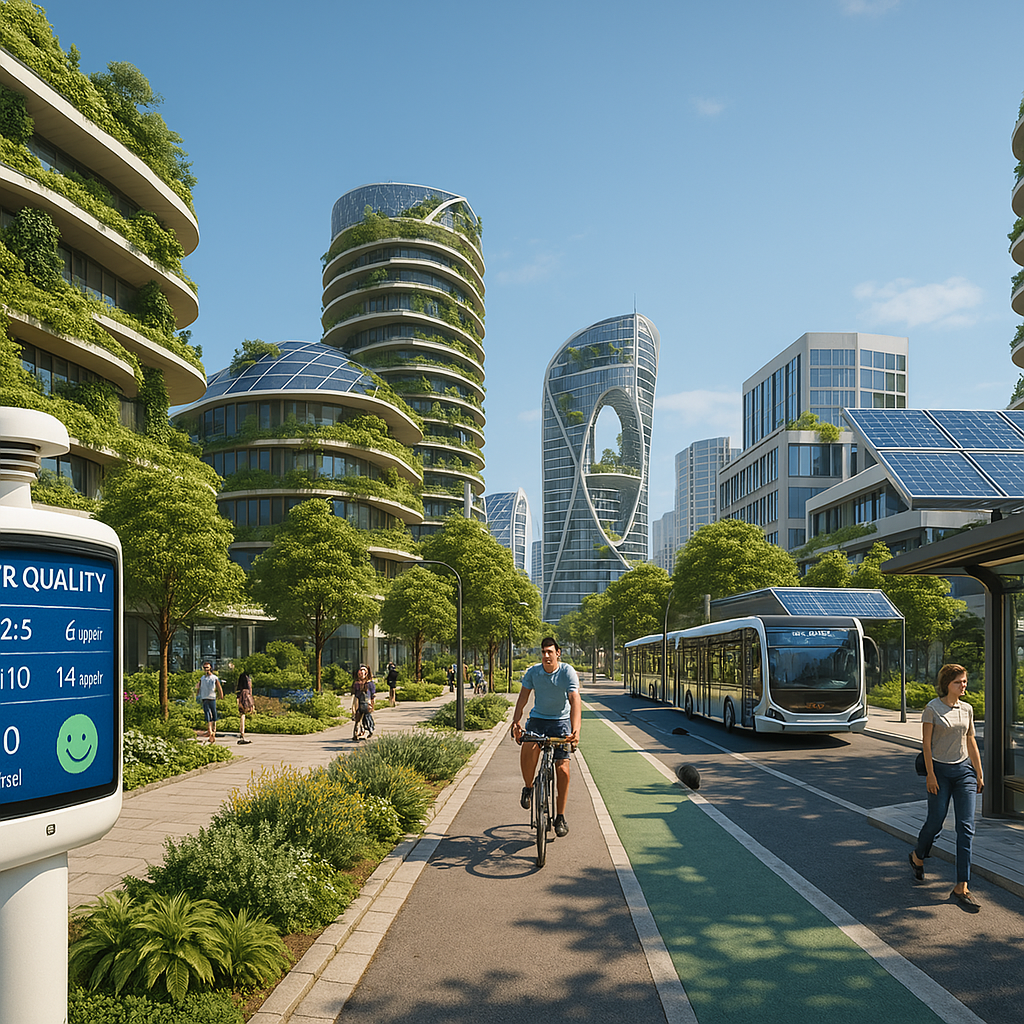The bigger picture of air quality impact
Air pollution is one of the most underestimated problems we face in modern history. The World Health Organization (WHO) estimates that air pollution is responsible for about 7 million premature deaths worldwide. Although health consequences are not to be overlooked, there’s a bigger picture that we need to look at.

Polluted air and your health
People are exposed to various air pollutants every day. For example, nitrogen dioxide exposure takes place while you are waiting for a bus next to a busy road. Fine dust (particulate matter) originating from a fireplace in your living room can easily penetrate deep into humans’ lungs. Lastly, high ozone concentrations can cause irritations on a hot, sunny summer day.
Most of the air pollutants are invisible and have no specific smell. Although air pollution has lots of different sources. For example, particulate matter or just PM is measured in micrometres, scientists differentiate several particle sizes starting from PM10, being the biggest, all the way to PM1, being the smallest (ultra-fine dust particles). Bigger means worse for your health, right? In this case, it’s the other way around. The smaller a particle is, the deeper it can penetrate a human body and thus the more damage it can do. Some examples of sources that can emit particulate matter are industrial processes such as making cement, both electric and petrol cars but also transboundary sources such as Sahara dust that can be even found in Belgium.
Polluted air and climate
Carbon dioxide (CO2) is a well-known pollutant and is often, if not every day, spoken of on different media channels, and that’s with a good reason. Today, scientists report that It takes more than an era to eliminate excessive CO2 levels in the atmosphere caused by anthropogenic activities. Due to its long lifetime in the atmosphere, carbon dioxide tends to accumulate and cause negative long-term impacts on the environment. Needless to say, the reduction of CO2 emissions is crucial.
Another important cause of global warming and air pollution is short-lived climate pollutants (SLCPs), consisting of black carbon, methane, tropospheric ozone, and hydrofluorocarbons. These pollutants are responsible for 30-40% of global warming to date. What is so interesting about them is that they don’t need 100+ years to break down and thus the reduction of SLCPs can have benefits for human and planetary health almost immediately. Some of them also have a much greater “Global Warming Potential” (GWP), such as methane which is 84 times more potent on a 20-year timescale than carbon dioxide.
Polluted air and weather
Air pollution can significantly affect the way the weather behaves. Particulate matter can reduce the amount of solar radiation that reaches the surface. This affects the amount of water that evaporates and consequently results in cloud formation as well as atmospheric water transport. Moreover, extreme weather periods observed in the last years are also linked to air pollution. Because of different cloud formations, some areas get heavy rainfall in a short period, while others don’t get any water at all. This variability has a big impact on agriculture and biodiversity.
Polluted air and food
Same as when sunlight reaches the surface to evaporate water, it also gives energy to plants. Pollutants like particulate matter reduce the amount of sunlight that reaches the plants which give them less energy. This ultimately causes reduced growth yield and lower food harvesting.
In addition, Ozone and acid rains caused by NOx and SOx can damage plant cells, and affect photosynthesis and even pollination.
Clean air for all
Air is something that affects us all. We have the means to reduce the current air pollution in both the near -and long-term, we just must act. Even by just reducing SLCPs, we can already slow the increase by as much as 0.6°C by 2050, the IPCC report says.
Having clean air is something that has an impact on our health, climate, food security and much more.
Learned something? Feel free to share.

Ventilation Audits in Flanders Care Homes: Airscan’s 40‑Site Study on Indoor Air Quality
Airscan’s audit of 40 Flemish care homes uncovered critical ventilation issues: nearly 1 in 4 rooms exceeded safe CO₂ limits. With VEB and VIPA support, the study offers data-driven solutions to protect residents’ health.

Smart Cities: Keys to Achieving Excellent Outdoor Air Quality
See how smart cities achieve excellent air quality with smart tech, green spaces, and clean transport. Discover proven strategies for cleaner urban air.

Belgium updates its air quality index following stricter WHO Standards
In November 2022, Belgium’s air quality monitoring scheme, Belgian Air Quality Index (BelAQI), underwent a major revision to better reflect the health risks associated with air pollution. Managed by IRCEL – CELINE, the updated index now aligns with the World Health Organization’s (WHO) 2021 air quality guidelines, introducing stricter thresholds and faster reporting.
